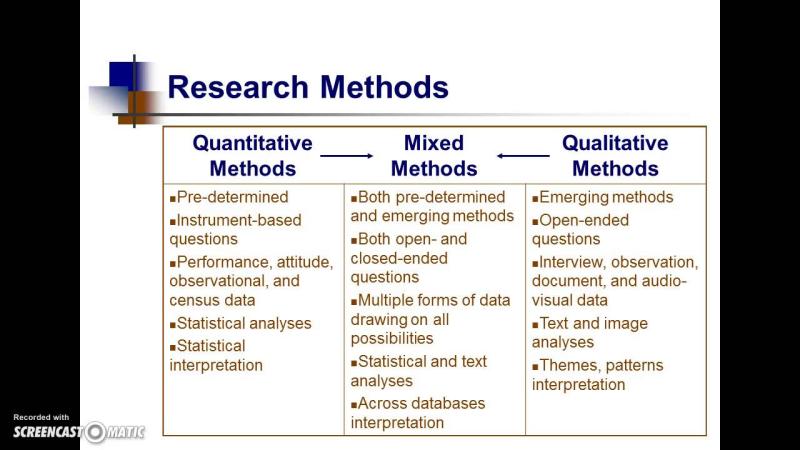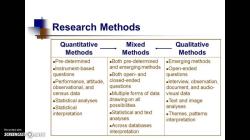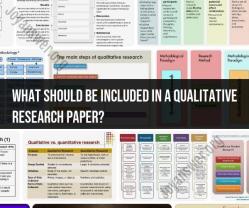What do you need to know about quantitative research proposal?
A quantitative research proposal is a detailed plan outlining the design and methodology of a research study that aims to quantify and analyze numerical data. Here are the key components typically included in a quantitative research proposal:
Title:
- The title should succinctly describe the main focus of the research study.
Introduction:
- Background: Provide a brief overview of the research topic, including the context and significance of the study.
- Problem Statement: Clearly articulate the problem or gap in knowledge that the research aims to address.
Literature Review:
- Summarize relevant existing research and literature related to the research topic. Identify gaps, controversies, or areas that need further exploration.
Theoretical Framework:
- Present the theoretical foundation or conceptual framework guiding the study. This establishes the theoretical basis for the research and helps structure the study's design and analysis.
Research Questions or Hypotheses:
- Clearly state the research questions or hypotheses that the study aims to answer. These should align with the research problem and objectives.
Objectives or Aims:
- Outline the specific objectives or aims of the research. These are the tangible outcomes or goals the study seeks to achieve.
Research Design:
- Type of Design: Specify the overall research design (e.g., experimental, quasi-experimental, survey, correlational) and provide justification for the chosen design.
- Sampling Strategy: Detail the method for selecting participants, including the target population, sampling frame, and sampling technique.
- Data Collection: Describe the instruments or tools used for data collection (e.g., surveys, questionnaires, experiments) and provide rationale for their selection.
- Variables: Clearly define and operationalize the independent and dependent variables. Identify any control variables.
Data Analysis Plan:
- Describe the statistical methods or techniques that will be used to analyze the data. Specify any statistical tests, software, and significance levels.
Ethical Considerations:
- Address ethical concerns associated with the research, including participant consent, confidentiality, and any potential risks or benefits.
Timeline:
- Provide a timeline outlining the various stages of the research, from proposal development to data analysis and reporting.
Budget:
- If applicable, include a budget detailing the costs associated with the research, such as materials, participant incentives, or data analysis software.
Limitations:
- Acknowledge and discuss any potential limitations of the study, such as sample size constraints, external validity issues, or limitations in the research design.
Significance of the Study:
- Discuss the potential contributions of the study to the field, its practical implications, and how it addresses the identified research problem.
References:
- Include a comprehensive list of all references cited in the proposal. Follow a specified citation style (e.g., APA, MLA).
Appendices:
- Attach any additional materials, such as informed consent forms, survey instruments, or supplementary data, in the appendices.
A well-structured and clearly articulated quantitative research proposal is essential for securing approval and effectively guiding the research process. Researchers should adhere to academic and institutional guidelines and seek feedback from mentors or advisors during the proposal development stage.
Key components and structure of a quantitative research proposal
A quantitative research proposal is a formal document that outlines the framework for conducting a quantitative research study. It serves as a roadmap for the researcher, guiding the design, implementation, and analysis of the study. The key components of a quantitative research proposal include:
1. Introduction
- Provides the background and context for the research
- Defines the research problem or question
- States the research objectives or hypotheses
2. Literature Review
- Summarizes relevant literature related to the research problem
- Identifies gaps in the existing knowledge base
- Establishes the significance and contribution of the proposed study
3. Theoretical Framework
- Outlines the theoretical underpinnings of the research
- Explains how the theory relates to the research problem and objectives
- Identifies the variables to be studied and their relationships
4. Methodology
- Describes the research design, including type of study, sampling method, and data collection procedures
- Explains the measurement instruments and data analysis techniques
- Discusses ethical considerations and potential limitations
5. Analysis Plan
- Details the statistical methods to be used for data analysis
- Explains the procedures for addressing missing data and outliers
- Outlines the data interpretation process
6. Expected Outcomes
- Presents the anticipated results of the study
- Discusses the implications of the findings for theory, practice, or policy
- Identifies potential limitations of the study and suggestions for future research
Writing an effective quantitative research proposal: A step-by-step guide
1. Define the Research Problem or Question
- Clearly articulate the research problem or question that the study aims to address
- Ensure that the problem is significant, feasible, and researchable
- Frame the problem in a way that can be addressed through quantitative methods
2. Conduct a Thorough Literature Review
- Review relevant academic literature, including peer-reviewed journal articles, books, and dissertations
- Identify key findings, theories, and debates related to the research problem
- Synthesize the literature to identify gaps in knowledge and establish the need for your study
3. Develop a Theoretical Framework
- Identify the relevant theories or conceptual models that guide your research
- Explain how the theoretical framework relates to the research problem and objectives
- Operationalize the theoretical constructs into measurable variables
4. Design a Robust Methodology
- Choose an appropriate research design, such as experimental, survey, or quasi-experimental
- Select a representative and appropriate sampling method
- Develop valid and reliable measurement instruments for data collection
- Outline clear data collection procedures and ethical considerations
5. Describe the Data Analysis Plan
- Specify the statistical methods to be used for data analysis
- Explain how the chosen methods address the research questions or hypotheses
- Discuss strategies for handling missing data, outliers, and potential threats to internal and external validity
6. Anticipate Outcomes and Implications
- Discuss the expected findings and their implications for theory, practice, or policy
- Acknowledge potential limitations of the study and suggest directions for future research
- Present the research proposal in a clear, concise, and organized manner, following APA or other relevant style guidelines
Tips for strengthening the methodology and analysis sections of a quantitative research proposal
- Clearly justify the chosen research design, sampling method, and data collection procedures
- Provide detailed descriptions of measurement instruments, including their validity and reliability
- Demonstrate a strong understanding of statistical methods and their application to the research problem
- Explicitly address potential threats to internal and external validity
- Provide clear and detailed explanations of data analysis procedures and interpretations
- Link the methodology and analysis sections to the overall research objectives and hypotheses











